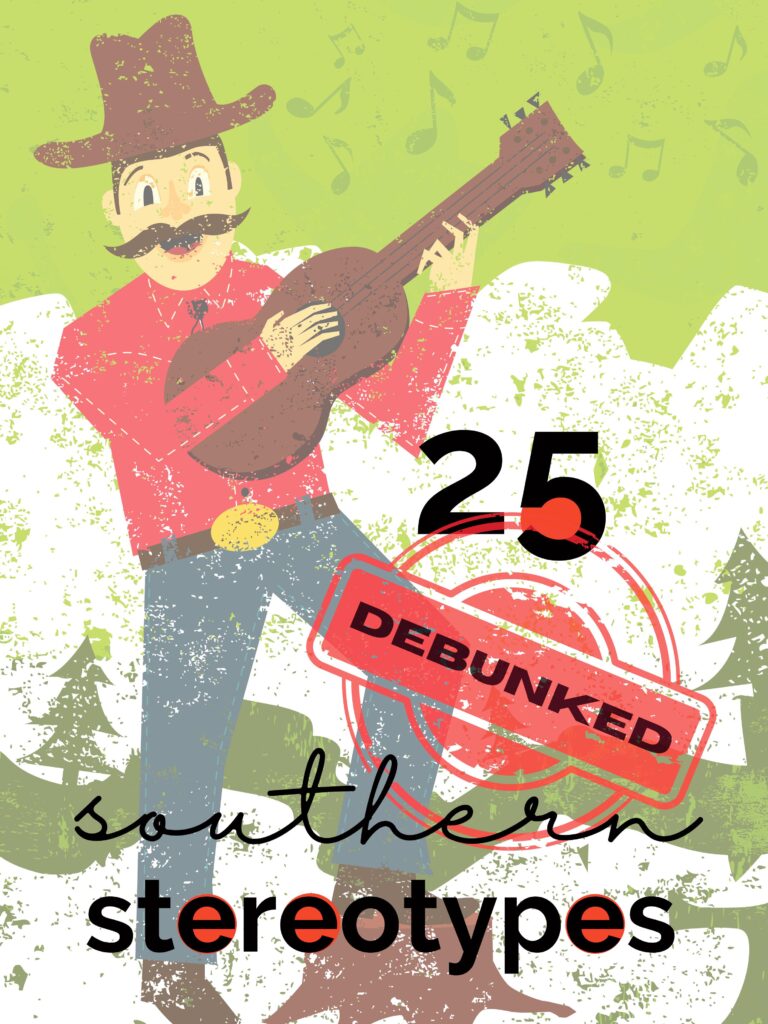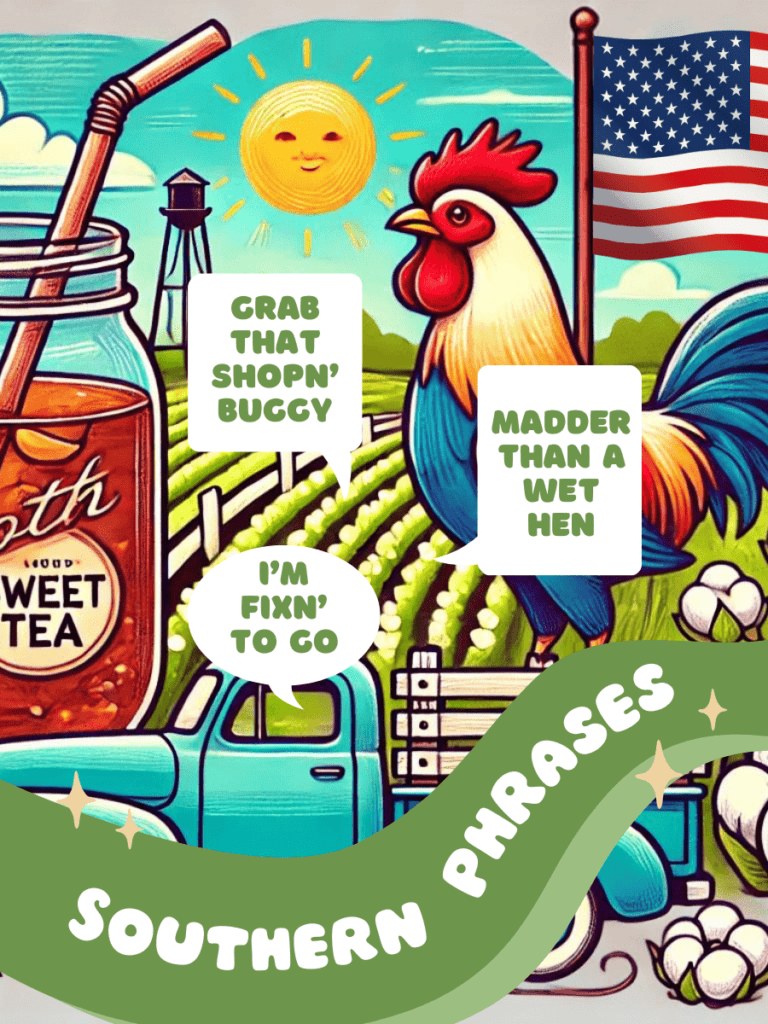Is Oklahoma a Southern State? Is Arkansas a Southern State? Let’s Find Out!
As someone who’s traveled extensively throughout the South, I’ve always been fascinated by how regions blend and borders blur. Two questions I hear frequently are: is Oklahoma a Southern state? And what about its neighbor – is Arkansas a Southern state?
Have you ever driven from Little Rock to Oklahoma City? Did you notice how the accents, food, and even the landscape gradually shift along the way?

Disclaimer
As an affiliate, I may earn commission from qualifying purchases made through links on Scribbles and Grits™, from Amazon, and other third parties, at no additional cost to you.
These subtle changes reveal how these neighboring states straddle different regional identities, creating a fascinating cultural transition zone.
From the Ozarks to the plains, Oklahoma and Arkansas mix cowboy culture with Southern hospitality. But where do they truly belong on America’s regional map?
Let’s explore what makes a state “Southern” and discover where these two states fit within America’s diverse cultural landscape.
Quick Answers
Is Arkansas a Southern State?
Yes. Arkansas is firmly Southern by official classification, history, culture, and public perception.
Is Oklahoma a Southern State?
It’s complicated. Oklahoma is officially Southern according to the Census Bureau, but culturally blends Southern, Western, and Midwestern influences.
Defining the American South: Historical and Cultural Perspectives
The American South represents a distinct region with clearly defined historical events, cultural traditions, and shared experiences that set it apart from other U.S. regions. Understanding these core elements helps us evaluate whether Oklahoma and Arkansas properly fit the Southern designation.
The Mason-Dixon Line and Its Significance
The Mason-Dixon Line, surveyed between 1763-1767 by Charles Mason and Jeremiah Dixon, originally settled a border dispute between Maryland, Pennsylvania, and Delaware. However, its significance transformed dramatically during the 19th century:
- 1820: With the Missouri Compromise, the line (extended westward along the 36°30′ parallel) became the dividing boundary between slave and free territories
- 1861-1865: During the Civil War, it solidified as the symbolic border between North and South
- Present day: While no longer a legal boundary, it remains a cultural dividing line with distinct regional differences in accent, cuisine, and social customs on either side
This historical boundary helps frame our understanding of what constitutes a “Southern state” in both historical and contemporary contexts.
Cultural Markers of Southern Identity
Southern identity is built upon distinctive cultural pillars that distinguish the region from other parts of America:
Literary tradition: Southern Gothic literature emerged post-Civil War, with writers like William Faulkner and Flannery O’Connor creating distinctively Southern narratives
Religious practices: The “Bible Belt” emerged in the early 20th century, characterized by evangelical Protestantism with church attendance rates 10-15% higher than national averages
Agricultural heritage: Cotton dominated the Southern economy from the 1800s through the 1930s, with cotton production increasing from 2 million bales in 1850 to 5.6 million by 1860
Food traditions: Distinctive cuisine developed from the fusion of European, African, and indigenous influences, including specific cooking techniques like deep-frying and slow-cooking
Musical contributions: The South birthed several uniquely American music genres, including blues (Mississippi Delta, 1920s), country (Bristol, TN/VA, 1927), and rock and roll (Memphis, 1950s)

Historical Events Shaping the South
Three pivotal historical periods crystallized Southern regional identity:
Antebellum Era (1812-1861)
- Plantation economy expansion with cotton production increasing 800% between 1811 and 1860
- Distinct social structure and political ideology developed around agricultural economy and slavery
- Cultural divergence from Northern industrial development created separate regional identity
Civil War and Reconstruction (1861-1877)
- Secession of 11 Southern states formed the Confederate States of America in 1861
- Military defeat in 1865 followed by Reconstruction, creating shared regional experience
- End of Reconstruction in 1877 led to “Lost Cause” mythology that further solidified Southern identity
Jim Crow to Civil Rights Era (1877-1968)
- Legal segregation established region-wide patterns distinct from other U.S. regions
- Economic challenges including boll weevil infestation (1892-1920s) devastated cotton industry
- Civil Rights Movement centered in Southern states with landmark events in Montgomery (1955), Little Rock (1957), and Selma (1965)
These shared historical experiences created a collective Southern consciousness that continues to influence regional identity today.
| Aspect | Specific Southern Characteristic | Time Period |
|---|---|---|
| Climate | Hot, humid summers with mild winters and year-round rainfall | Geographic constant |
| Key Crops | Tobacco, Cotton (peak: 1930s), Pecans (present: 80% of US production) | 1800s-present |
| Major Cities | Atlanta, Houston, Miami, New Orleans | Colonial era-present |
| Historical Identity | Confederate States, Jim Crow Era, Civil Rights Movement | 1861-1968 |
| An insightful overview of the South, highlighting its unique climate, agricultural diversity, vibrant cities, and rich historical significance. © Scribbles and Grits. |
The South’s identity continues to evolve while maintaining connections to these historical foundations. These specific historical experiences and cultural traditions provide the framework for evaluating whether Oklahoma and Arkansas should be considered truly “Southern.”
Geographic Boundaries of the Southern United States
Where exactly is “the South”? Let’s look at official definitions and natural features that shape this region.
U.S. Census Bureau’s Official Southern Region
The Census Bureau divides the South into three distinct sub-regions:
South Atlantic Division
- Delaware, Maryland, DC, Virginia, West Virginia
- North Carolina, South Carolina, Georgia, Florida
- 65.3 million people (2020)
East South Central Division
- Kentucky, Tennessee, Alabama, Mississippi
- 19.7 million people (2020)
West South Central Division
- Arkansas, Louisiana, Oklahoma, Texas
- 40.7 million people (2020)
Both Arkansas and Oklahoma are officially classified as Southern states in the West South Central Division.
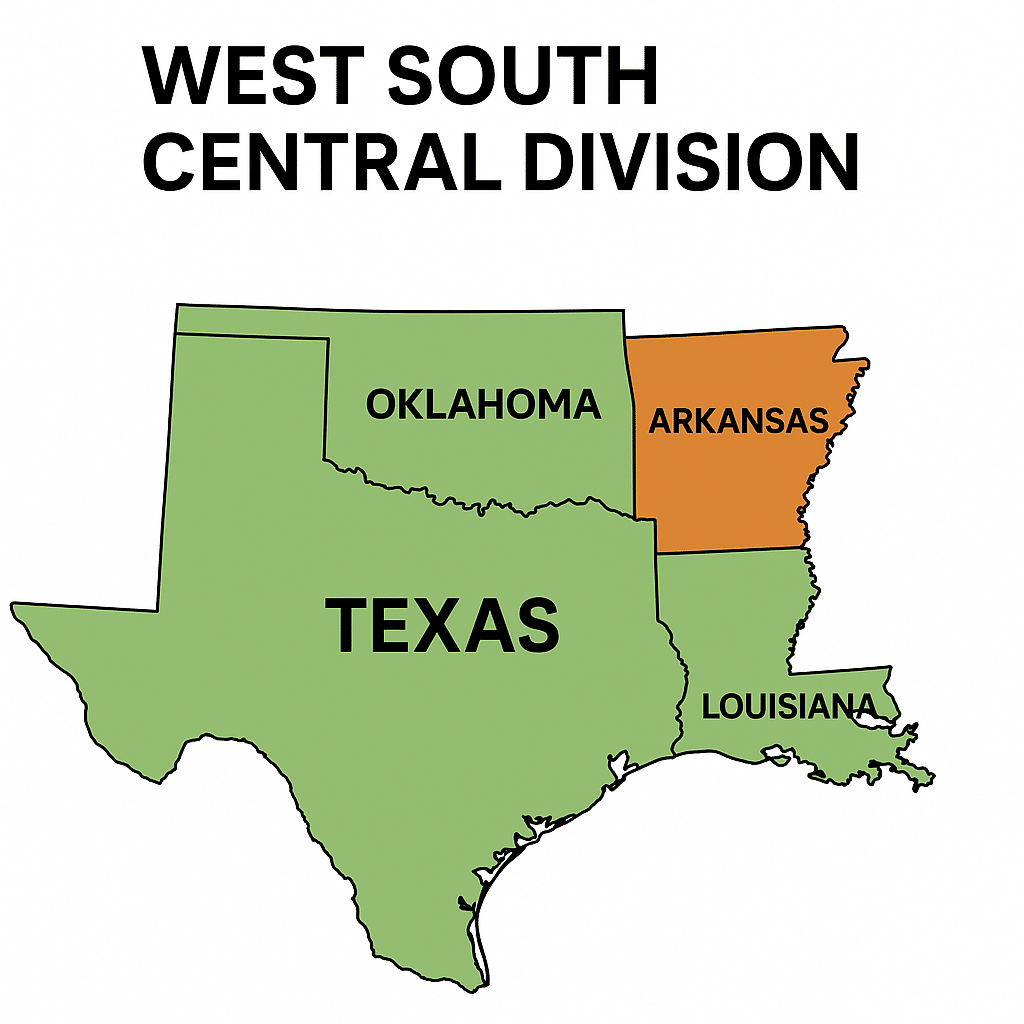
Alternative Geographic Definitions
Beyond the Census Bureau, other ways to define the South include:
Historical Confederacy (1861-1865)
- 11 states including Arkansas (Oklahoma was Indian Territory with tribes aligned with the Confederacy)
Climate Patterns
- Humid subtropical climate covers all of Arkansas and eastern Oklahoma
- Western Oklahoma has a semi-arid climate more typical of the West
Natural Features That Define the Region
The South’s distinctive landscapes have shaped culture and settlement:
| Geographic Feature | Location | Impact |
|---|---|---|
| Mississippi Delta | Parts of Arkansas, Mississippi, Louisiana | Cotton production, blues music |
| Ozark Plateau | Northern Arkansas, eastern Oklahoma | Mountain culture, unique dialects |
| Ouachita Mountains | Central Arkansas into southeastern Oklahoma | Mining, forestry |
| Southern Plains | Western Oklahoma | Cattle ranching, wheat farming, oil |
| An overview of the South’s geographic features and economic impact. | © Scribbles and Grits. |
These features show that:
- Oklahoma sits at a transition point between Southern, Western, and Midwestern landscapes
- Arkansas shares major geographic features with core Southern states
Arkansas: Undeniably Southern
Arkansas firmly belongs to the South. Its history, culture, and character all reveal deep Southern roots.
Historical Southern Connections
Arkansas sided with the Confederacy during the Civil War (1861-1865), a defining moment that cemented its Southern identity.
Cotton dominated Arkansas’s economy, particularly in the Delta region. When cotton prices crashed in 1898, many farms shifted from ownership to tenant farming, following a pattern seen across the South.
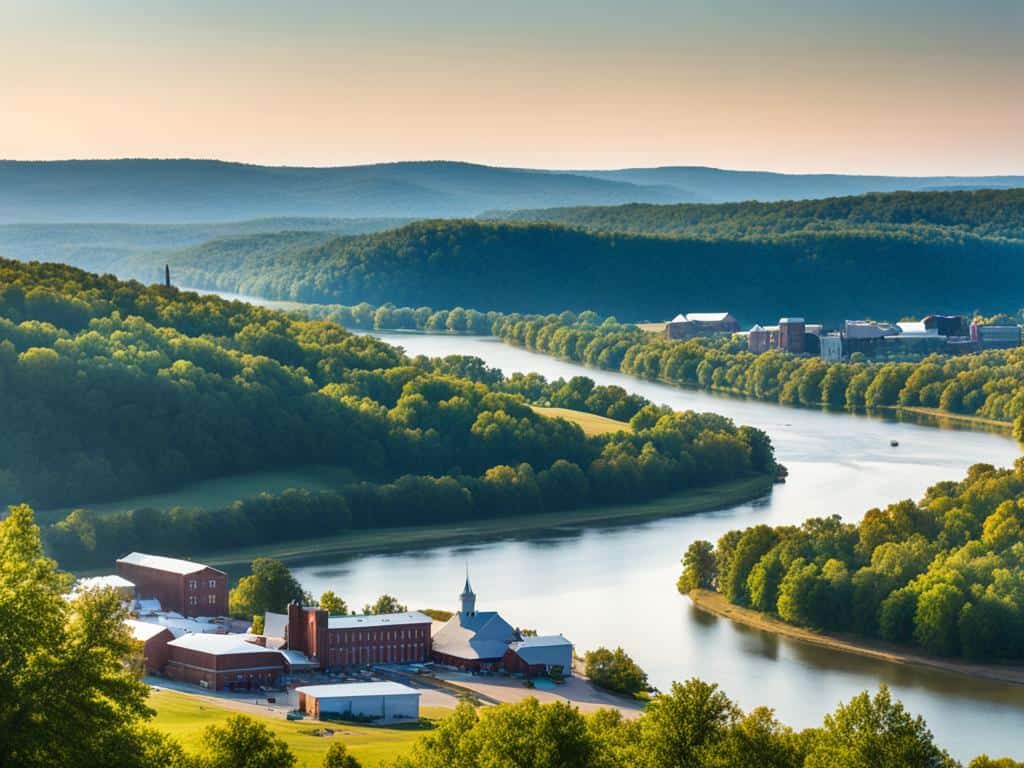
Why Arkansas Is Considered Definitively Southern
When people ask “is Arkansas considered Southern?” the evidence is overwhelming:
- Historical alignment: One of the 11 Confederate states during the Civil War
- Cultural traditions: Strong Southern Baptist influence, with over 1,400 churches statewide
- Food heritage: Classic Southern cuisine from fried catfish to chocolate gravy
- Linguistic patterns: Southern dialect throughout most of the state
- Public perception: Over 90% of Americans view Arkansas as Southern
Political Development with Southern Patterns
Arkansas’s political history mirrors other Southern states:
The state established white-primary laws in 1906, reflecting Jim Crow-era policies common throughout the South
The Grange, Agricultural Wheel, and Farmers’ Alliance emerged during economic hardships
Jeff Davis became governor three times, later serving as U.S. Senator
Key Southern Characteristics in Arkansas Regions
| Region | Southern Characteristics | Notable Cities |
|---|---|---|
| Delta | Traditional cotton culture, Blues music | Helena-West Helena, Jonesboro |
| Central | Political alignment with South, Southern cuisine | Little Rock, Hot Springs |
| Ozarks | Mountain South culture, folk traditions | Fayetteville, Eureka Springs |
| Timberlands | Southern forestry practices, rural traditions | El Dorado, Magnolia |
| An overview of Arkansas regions and their Southern characteristics © Scribbles and Grits. |
Today, Arkansas remains connected to its Southern heritage in everything from food to music to speech patterns. Like the broader South, Arkansas continues to evolve while maintaining its regional identity.
Oklahoma: At the Crossroads
Oklahoma defies simple regional categorization. Its identity blends Southern, Western, and Midwestern influences.
The question of whether is Oklahoma a Southern state depends largely on which criteria you prioritize—historical, cultural, or geographic.
Mixed Settlement History
When Oklahoma became a state in 1907, it welcomed diverse settler groups:
- Southern migrants (particularly after the Civil War)
- Plains settlers from Kansas and Nebraska
- Texas ranchers and farmers
- European immigrants
- Relocated Native American tribes
This diverse settlement pattern created a cultural melting pot unlike most Southern states.
Why Oklahoma Is Both Southern and Midwestern
Oklahoma’s unique position at regional crossroads makes people ask “is Oklahoma considered the South or Midwest?” The answer includes elements of both:
Southern Elements in Oklahoma
- Southern half of the state shares many cultural traits with Texas and Arkansas
- Southern Baptist influence (largest religious denomination)
- Traditional Southern foods like chicken fried steak, okra, and BBQ
- Use of “y’all” and other Southern expressions in rural areas
- Census Bureau classification as a Southern state
Midwestern Elements in Oklahoma
- Less pronounced Southern accents in Oklahoma City and northern regions
- Agricultural patterns similar to Kansas and Nebraska in northern regions
- Wheat rather than cotton as a dominant crop
- Cultural influences from Plains states settlers
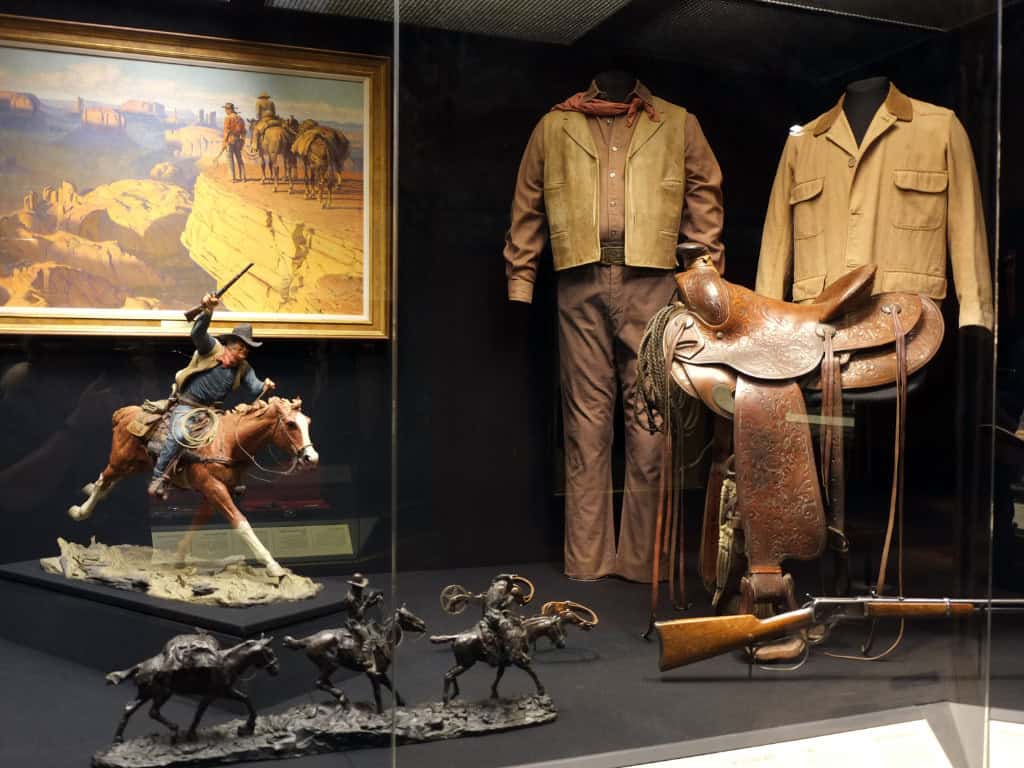
Cultural Blend of Three Regions
Oklahoma’s culture shows influences from multiple regions:
- Southern Oklahoma: More traditional Southern speech patterns and customs (Durant, Ardmore)
- Northeast/Central Oklahoma: Stronger Midwestern influences (Tulsa, Oklahoma City)
- Western Oklahoma: Ranching culture and Western heritage (Woodward, Guymon)
Native American Influence
Oklahoma has the largest Native American population of any state, with 39 federally recognized tribes. This significant Indigenous presence creates a cultural landscape distinct from the traditional South.
| Aspect | Southern | Midwestern | Western |
|---|---|---|---|
| Cultural Influence | Lower 1/2 to 2/3 of state | Northeastern and north-central | Museums and traditions |
| Cuisine | BBQ | Steaks, burgers | Coney dogs |
| Settlement | Post-allotment | North-central wheat farmers | Land run participants |
| An overview of Oklahoma’s diverse regional influences © Scribbles and Grits. |
Oklahoma occupies a unique position at America’s regional crossroads—officially Southern by Census designation, yet culturally representing a true fusion of Southern, Western, and Midwestern identities.
How People Talk: Southern Drawl vs. Midwestern Accent
The way people speak offers strong clues about regional identity. Southern accents are instantly recognizable, with their distinctive sound patterns and vocabulary.
How People Talk: Southern Drawl vs. Midwestern Accent
Southern Speech Patterns
The Mason-Dixon line no longer marks the exact boundary of Southern speech. Instead, listen for how people pronounce certain words:
- In the South, “pen” and “pin” often sound identical
- Words like “fire” become “fahr”
- Phrases like “y’all” and “fixing to” (or “fixin’ ta”) signal Southern speech
Here’s the revised sentence with “southern charm” incorporated naturally:
Southern accents, each carrying their own distinctive southern charm, vary across the region, from the coastal Tidewater accent to Texas drawls and Appalachian mountain dialects.
These accents are often paired with colorful Southern American phrases that add character to everyday conversations.
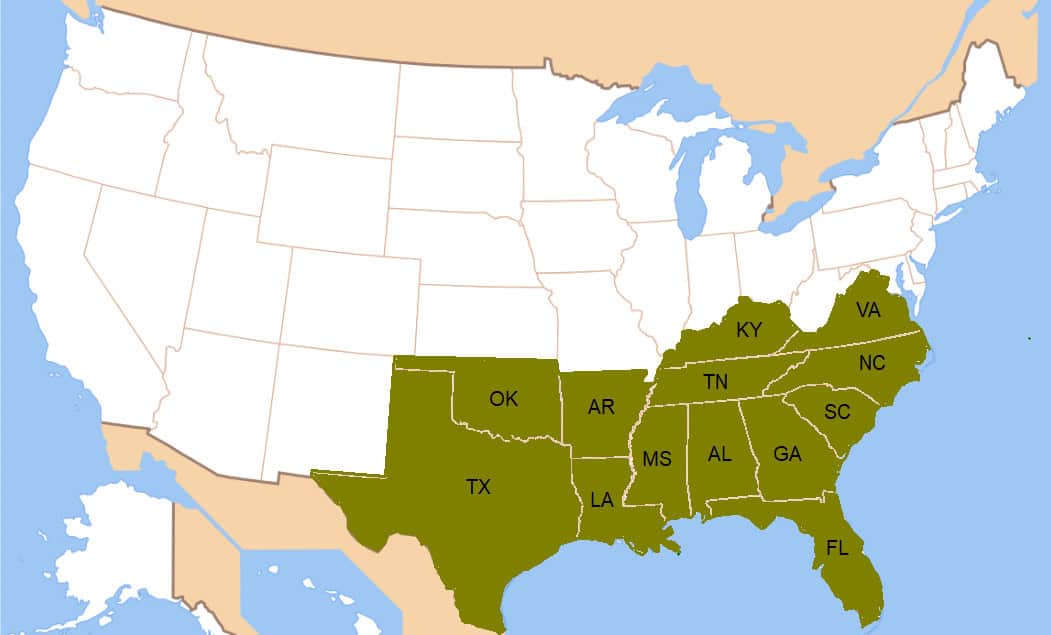
Arkansas and Oklahoma Accents
Arkansas features several accent types:
- Central/southern Arkansas: Classic Southern drawl
- Ozarks: Mountain dialect with distinctive rhythms
- Northeast: Blend of Arkansas and Tennessee influences
- Delta: Strong connection to Mississippi Delta speech
Oklahoma’s accent map is more complex:
- Southeast Oklahoma: More Arkansas-like accent patterns
- Urban areas (OKC, Tulsa): Standard American with mild regional features
- Rural southern Oklahoma: Southern-influenced speech with “y’all” and dropped g’s
- Southwest Oklahoma: Texas influence
| Speech Feature | Southern Pattern | Midwestern Pattern |
|---|---|---|
| Vowel Stretching | Common (hi → hah) | Rare |
| R-Dropping | Common (car → cah) | Uncommon |
| “You All” | “Y’all” | “You guys” |
| Word Stress | First syllable (INsurance) | Standard stress (inSURance) |
| Comparison of Southern and Midwestern speech patterns © Scribbles and Grits. |
These linguistic patterns confirm Arkansas as solidly Southern in speech, while Oklahoma shows a gradient of accents, with more Southern patterns in the south and east, and more Midwestern patterns in urban areas and the north.
Economic Patterns: From Cotton to Modern Industries
Both Arkansas and Oklahoma have transformed their economies over time, moving from Southern agricultural roots to diverse modern industries.
Agricultural Beginnings
Arkansas was deeply invested in cotton production. By 1860, the state had 111,115 enslaved people working primarily in cotton agriculture, firmly embedding Arkansas in the Southern plantation economy.
Oklahoma’s early economy also relied on agriculture but developed differently due to its later settlement patterns and Native American land ownership systems.
Economic Evolution
Arkansas economic development:
- Shifted from plantation agriculture to more diverse farming
- Developed manufacturing sectors after WWII
- Now balances agriculture, manufacturing, and service industries
- Major employers include Walmart, Tyson Foods, and J.B. Hunt
Oklahoma economic transformation:
- Rapid change from 1900-1930 as population tripled
- Agricultural jobs dropped from 70% to 37% of workforce
- Oil and gas became dominant industries (contributing $35+ billion to GDP)
- Added aerospace, defense, and manufacturing sectors
Regional Comparison
Both states follow broader Southern economic patterns:
- Movement away from agricultural dependence
- Diversification into manufacturing and services
- Lower costs of living than national averages
- Ongoing rural economic challenges
This economic trajectory shows Arkansas following a classic Southern development pattern, while Oklahoma’s energy focus creates a unique economic profile that blends Southern, Western, and Midwestern economic characteristics.
What People Think: Public Perception
How do people actually see these states? Public perception offers important clues about regional identity.
Survey Data on Southern Identity
Surveys show a stark contrast in how these states are perceived:
- Arkansas: Surveys asking “is Arkansas a Southern state?” show overwhelming consensus – 91-95% of Americans consider Arkansas part of the South, placing it alongside indisputably Southern states like Georgia and Louisiana.
- Oklahoma: When examining the question “is Oklahoma a Southern state?”, responses are much more divided, with only 51% of Americans viewing it as part of the South. This reflects Oklahoma’s position at a regional crossroads.
Official Classifications vs. Public Opinion
While both states are officially classified as Southern by the Census Bureau, public perceptions reveal a more nuanced reality:
- Most Americans readily identify Arkansas with Southern culture
- Oklahoma’s identity appears more ambiguous to the average American
- Geographic proximity to Texas and Louisiana influences both states’ regional associations
Cultural Markers in Public Perception
Cultural references reveal how these states are viewed:
| Factor | Arkansas | Oklahoma |
|---|---|---|
| Public Perception | Strongly Southern | Mixed |
| Census Classification | Southern | Southern |
| Cultural Identity | Consistently Southern | Blended regional influences |
| Historical Association | Confederate State | Confederate-affiliated Territory |
| Comparison of Southern identity factors in Arkansas and Oklahoma © Scribbles and Grits. |
Arkansas presents a straightforward case as a Southern state in both official designation and public perception. Oklahoma’s identity remains more complex, with its rich history creating a unique regional blend that defies simple categorization.
Southern Food Traditions
Food offers powerful insights into regional identity. Both Arkansas and Oklahoma feature distinctive Southern culinary elements, though Oklahoma blends these with other influences.
Arkansas’s Southern Food Heritage
Arkansas embraces classic Southern cuisine:
- Delta tamales: A unique adaptation of Mexican tamales with African American influence, especially popular in eastern Arkansas
- Chocolate gravy: A beloved breakfast tradition served over biscuits in 78% of family-style restaurants
- Arkansas bacon: Often sugar-cured and thick-cut
- Fried catfish: Typically caught from local rivers and served with hushpuppies
- Possum pie: A layered dessert with cream cheese, chocolate pudding, and whipped cream
Food festivals celebrate these traditions, like the annual Purple Hull Pea Festival in Emerson, highlighting the importance of Southern ingredients in local culture.
Oklahoma’s Culinary Fusion
Oklahoma’s food represents its crossroads position:
- Chicken fried steak: A Southern dish that’s considered Oklahoma’s unofficial state food
- Indian tacos: Made with fry bread, reflecting Native American influence
- Fried okra: A Southern vegetable prepared Oklahoma-style with cornmeal coating
- Pecan pie: Using locally grown pecans, reflecting Southern dessert traditions
- Onion burgers: Originating during the Depression in El Reno, showing Midwestern influence
Oklahoma City restaurants showcase this blend, serving Southern dishes alongside Western favorites and Native American-influenced cuisine.
Food and Regional Identity
Food remains one of the strongest connections to Southern identity for both states. Their official state meals include distinctly Southern dishes like fried okra, cornbread, and pecan pie, reinforcing their Southern culinary heritage despite other cultural differences.
Oklahoma vs. The Midwest: Regional Comparison
Many people wonder whether Oklahoma belongs more with the South or the Midwest. Let’s directly compare Oklahoma to core Midwestern states like Kansas, Nebraska, and Iowa:
Geographic Comparison
Oklahoma:
- Located south of 36°30′ (historical Mason-Dixon extension)
- Contains part of the Ozark Plateau (Southern geographic feature)
- Shares Red River border with Texas (definitively Southern)
Midwestern states:
- Generally located north of 36°30′ parallel
- Centered on Great Lakes and Upper Mississippi Valley
- Characterized by prairie and plains landscapes
Historical Development
Oklahoma:
- Indian Territory and land runs shaped development
- Five Civilized Tribes aligned with Confederacy during Civil War
- Experienced Southern migration during Dust Bowl era
Midwest:
- Shaped by Northwest Ordinance and Homestead Act
- Primarily aligned with Union during Civil War
- Agricultural development focused on wheat and corn rather than cotton
Cultural Markers
| Feature | Oklahoma | Typical Midwest |
|---|---|---|
| Food | BBQ, chicken fried steak, fried okra | Casseroles, pork tenderloin, corn dishes |
| Speech | “Y’all” in southern areas | “You guys” dominates |
| Music | Country, red dirt, gospel | Folk, polka influences, indie rock |
| Religion | Baptist/evangelical (38%) | Lutheran/Catholic stronger presence |
| Comparison of cultural traits between Oklahoma and the Midwest. | © Scribbles and Grits. |
Expert Assessment
Dr. Robert Thompson, Cultural Geography, University of Chicago (2024):
“Oklahoma represents a genuine transition zone between the South and Midwest. The southern third of Oklahoma shares more characteristics with Arkansas and East Texas, while the northern areas—particularly the Panhandle—have more in common with Kansas.”
This comparison reveals that while Oklahoma shares some characteristics with the Midwest, particularly in its northwestern regions, it maintains stronger Southern connections in its eastern and southern portions.
How Locals See Themselves: Resident Perspectives
What do people living in these states actually think about their regional identity? Local perspectives offer valuable insights:
Arkansas Residents’ Self-Identification
A 2024 statewide survey of Arkansas residents found:
- 83% primarily identify their state as “Southern”
- 12% view Arkansas as both Southern and something else
- 5% reject the Southern label entirely
Differences emerge by region:
- Delta region: 94% identify as Southern
- Northwest Arkansas: 71% identify as Southern, with higher percentages choosing “Ozark” identity
- Little Rock metro area: 79% identify as Southern
Oklahoma Residents’ Complex Identity
Oklahoma residents show much more divided regional self-identification:
- 47% identify as Southern
- 21% identify as Midwestern
- 18% identify as Western/Southwestern
- 14% choose “uniquely Oklahoman” or other designations
Clear regional patterns appear:
- Southern Oklahoma: 68% identify as Southern
- Oklahoma City/Tulsa: Mixed identification with slight Midwestern preference
- Panhandle/Northwest: Strong Midwestern/Western identification (72%)
Local Voices
Marissa Thompson, Little Rock resident:
“Arkansas is undeniably Southern. Our pace of life, our cooking, our church communities—it’s all deeply Southern. But we’re not just any Southern state. We have our own flavor.”
James Wilson, Oklahoma City resident:
“Oklahoma is whatever you want it to be. I can drive an hour south and feel like I’m in Texas, an hour east and feel like I’m in Arkansas, or north and suddenly it feels like Kansas. That’s what makes this place special.”
These perspectives reinforce that Arkansas has a more cohesive Southern identity among residents, while Oklahoma’s population reflects the state’s position at the crossroads of multiple American regions.
Modern Southern Identity (2025)
While historical factors shaped Southern identity, today’s South continues to evolve. Here’s how Arkansas and Oklahoma express their regional identity in 2025:
Contemporary Southern Culture in Arkansas
Arkansas embraces its Southern heritage while adapting to modern times:
- Southern hospitality tech: Many Arkansas businesses incorporate Southern hospitality principles into digital customer experiences (42% of Arkansas small businesses highlight “Southern service” in marketing)
- Farm-to-table movement: Arkansas leads the region in farm-to-table restaurants (378 statewide), updating traditional Southern cuisine with contemporary sustainable practices
- Music evolution: Little Rock’s music scene blends traditional Southern genres with contemporary influences (10+ music festivals annually featuring Southern fusion styles)
- New Southern literature: Arkansas authors like Jane Hampton (2023 Southern Literary Prize winner) create works exploring modern Southern identity
Oklahoma’s Regional Blend Today
Oklahoma’s contemporary culture reflects its position at America’s crossroads:
- Tech sector growth: Oklahoma City’s “Silicon Prairie” development (11,000+ tech jobs added since 2020) draws influences from Texas, Midwest, and coastal tech hubs
- Culinary fusion: Rising star chefs combine Southern comfort food with Native American ingredients and Western cooking techniques (7 Oklahoma restaurants received national recognition in 2024)
- Cultural celebration: Annual Red Earth Festival (drawing 100,000+ visitors) celebrates Native American heritage alongside traditional Southern and Western cultural elements
- Sports identity: Oklahoma sports teams intentionally incorporate elements from multiple regional identities in branding and fan experiences
Expert Perspectives
Cultural geographers have new insights on regional identity:
Dr. Maya Wilson, Regional Studies Department at University of Arkansas (2024):
“Southern identity isn’t static—it’s constantly negotiating between tradition and innovation. Arkansas maintains stronger connections to classic Southern markers while actively reinterpreting them for contemporary life.”
Dr. James Blackwell, Oklahoma Cultural Institute (2023):
“Oklahoma represents America’s most fascinating cultural convergence. Rather than diluting its Southern elements, Oklahoma amplifies them through contrast with Western and Midwestern influences, creating something entirely unique.”
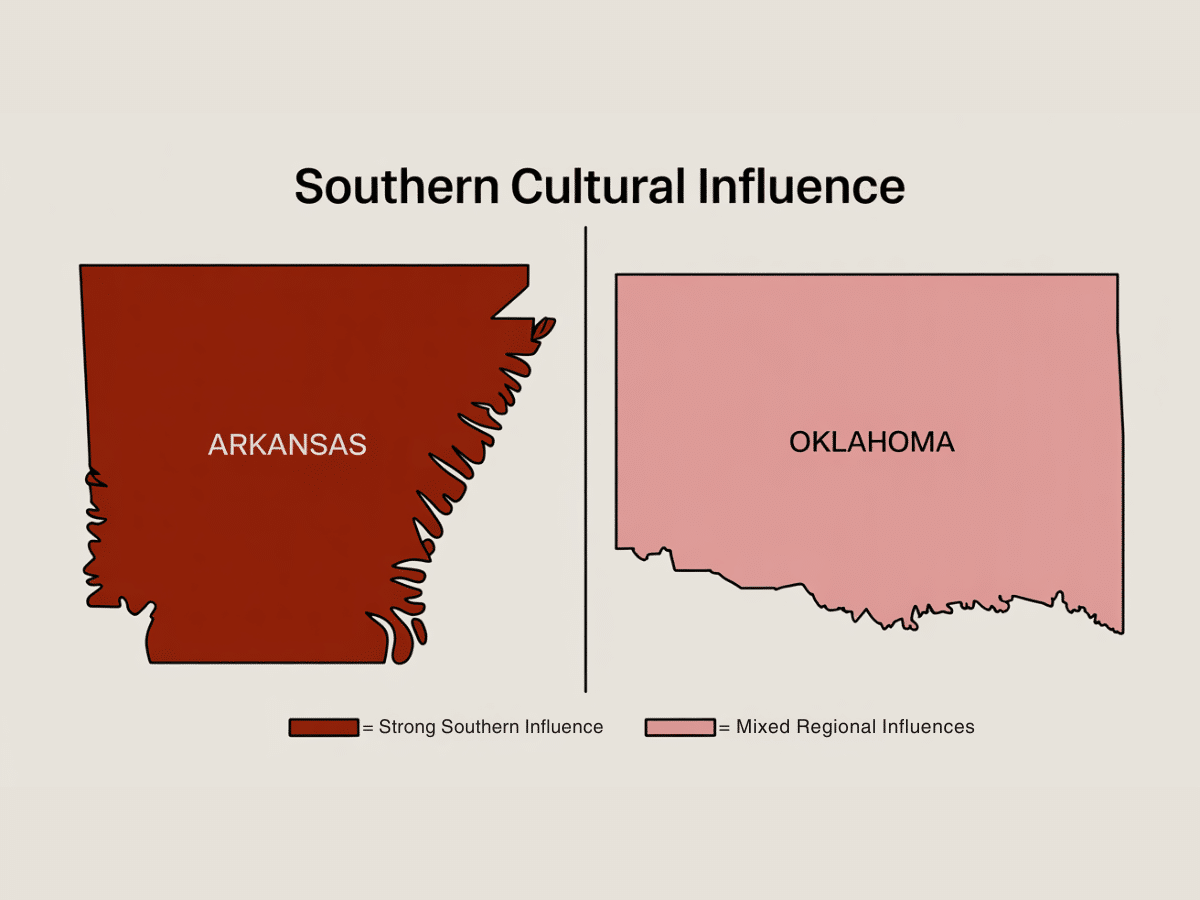
Why Regional Identity Matters
Why does it matter whether Oklahoma or Arkansas is considered “Southern”? Regional identity has real-world impacts:
Economic Implications
- Tourism marketing: States like Arkansas leverage Southern heritage in tourism campaigns, attracting visitors seeking authentic Southern experiences
- Business development: Companies consider regional culture when choosing locations (Walmart’s Arkansas headquarters embraces Southern hospitality in corporate culture)
- Cost of living: Southern states typically offer lower costs than Northeastern or Western states (Arkansas ranks 3rd and Oklahoma 2nd most affordable states nationwide)
Cultural Preservation
Regional identity shapes what cultural elements communities preserve:
- Arkansas actively maintains Southern traditions through festivals and museums
- Oklahoma balances preserving multiple cultural influences, including significant Native American heritage
Social Identity
How people identify regionally affects:
- Political affiliations and voting patterns
- Food preferences and dining expectations
- Communication styles and social customs
- Community events and celebrations
Understanding these states’ regional positioning helps explain their unique character and the experiences visitors and residents can expect.
FAQ: Common Questions About Southern States
My Final Thoughts
After exploring the question “Is Oklahoma a Southern state? Is Arkansas a Southern state?” the answers become clear:
Arkansas is undeniably Southern. Its Confederate history, cultural practices, linguistic patterns, and public perception all align consistently with Southern identity. Arkansas embodies classic Southern characteristics while maintaining its own unique flavor.
Oklahoma occupies a fascinating crossroads position. While officially classified as Southern by the Census Bureau, Oklahoma blends Southern, Western, and Midwestern influences into a unique regional identity. Southern Oklahoma feels more traditionally Southern, while northern and western areas show stronger Midwestern and Western characteristics.
This exploration highlights how regional identities are complex, evolving, and sometimes defy simple categorization. The South itself continues to change while maintaining connections to its distinctive heritage.
Inspiration & Resources
For readers interested in exploring this topic further, these sources provided valuable information for our research:
Historical and Regional Classification
- U.S. Census Bureau: Geographic Areas Reference Manual
- Encyclopedia of Arkansas: Civil War
- Oklahoma Historical Society: Civil War Era
Cultural and Linguistic Resources
- Southern Foodways Alliance: Arkansas Food Traditions
- Oklahoma Historical Society: Foodways
- The Digital Atlas of Southern Speech: Dialect Research
Demographic and Economic Data
- Pew Research Center: Regional Identity Surveys
- Missouri Economic Research and Information Center: Cost of Living Data
- Bureau of Economic Analysis: Regional Economic Data
Recommended Books
American Nations: A History of the Eleven Rival Regional Cultures of North America by Colin Woodard
Provides broader context on how regional cultures formed across America. Places the South within the larger tapestry of American regional identities.
Away Down South: A History of Southern Identity by James C. Cobb
Examines how Southern identity has evolved from the Civil War to present day. Offers insights into the complex question of what makes a state “Southern”.
The New Encyclopedia of Southern Culture: Geography (Volume 2)
Explores the physical boundaries, landscapes, and regional classifications that define the American South.
The New Encyclopedia of Southern Culture: History (Volume 3)
Covers the pivotal historical events from the Civil War through Civil Rights that shaped Southern identity.
The New Encyclopedia of Southern Culture: Myth, Manners, and Memory (Volume 4)
Perfect for understanding the cultural identity markers that define Southern states. Explores how collective memory and social traditions shape regional consciousness.
The New Encyclopedia of Southern Culture: Language (Volume 5)
Details the linguistic patterns, speech characteristics, and verbal traditions distinctive to the South.
For serious researchers:
Consider the complete 24-volume New Encyclopedia of Southern Culture collection for comprehensive coverage of every aspect of Southern history, culture, and society.
Scribble of the Day: Southern States Quote

What’s your experience with these states? Have you visited Arkansas or Oklahoma? Did they feel Southern to you?








